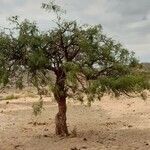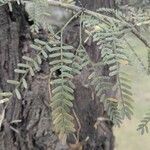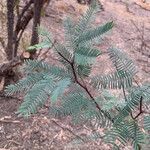Multi-stemmed shrub or tree, up to 4 m high. Spines straight, paired at nodes. Leaves drooping; leaflets long and slender, widely spaced, 7-22 per pinna, yellow-green. Flowers: in axillary spikes; only 10 stamens per flower; corolla bright yellow; Oct.-Feb. Pods broad and thick, not constricted around seeds.






